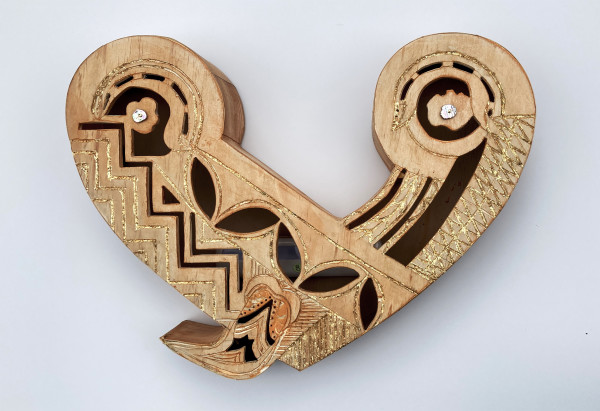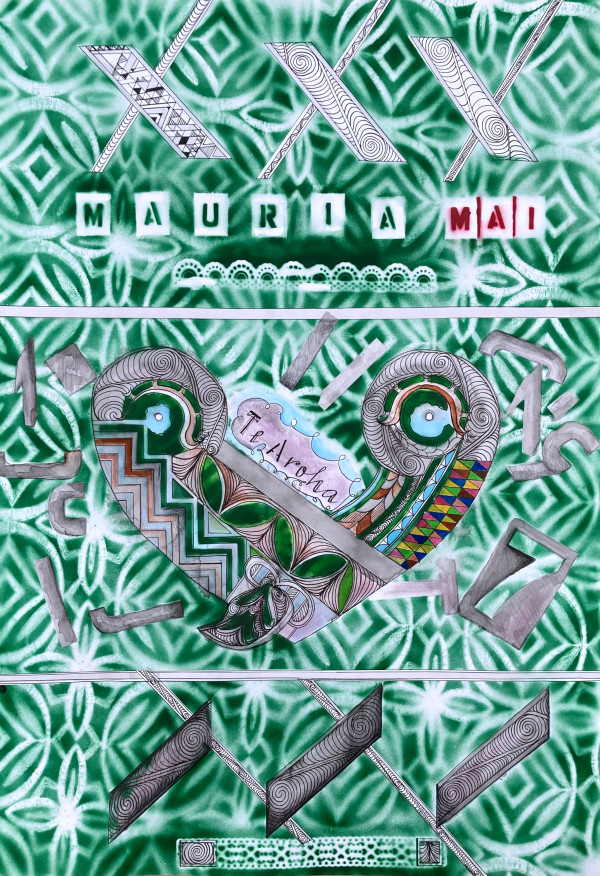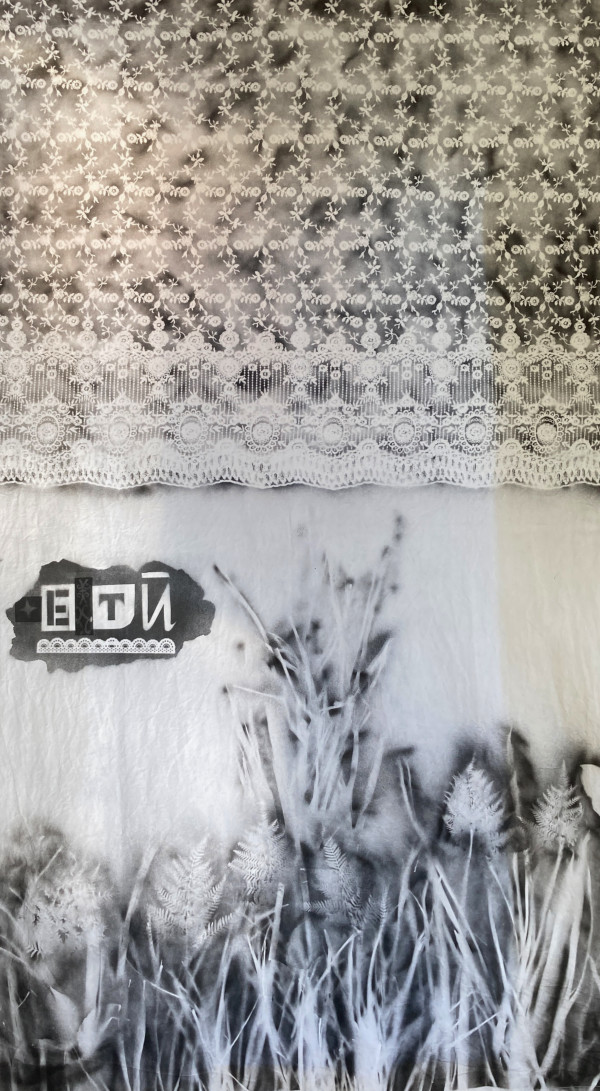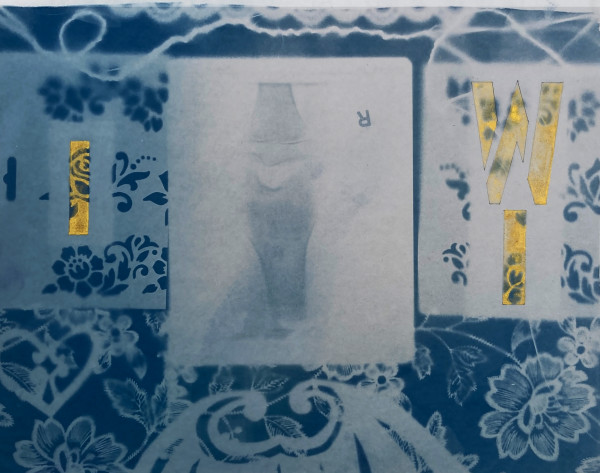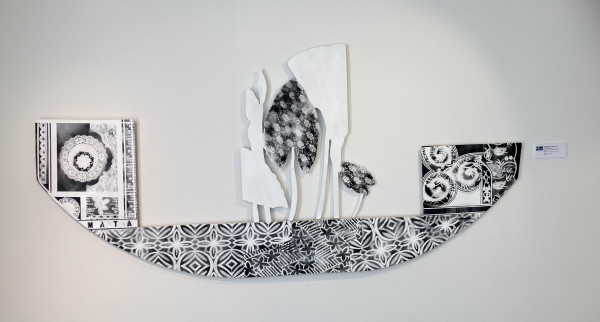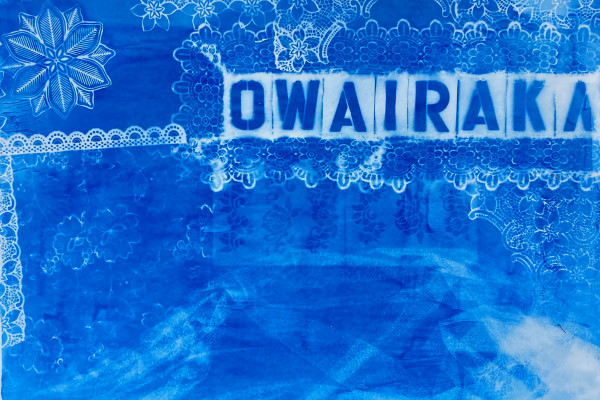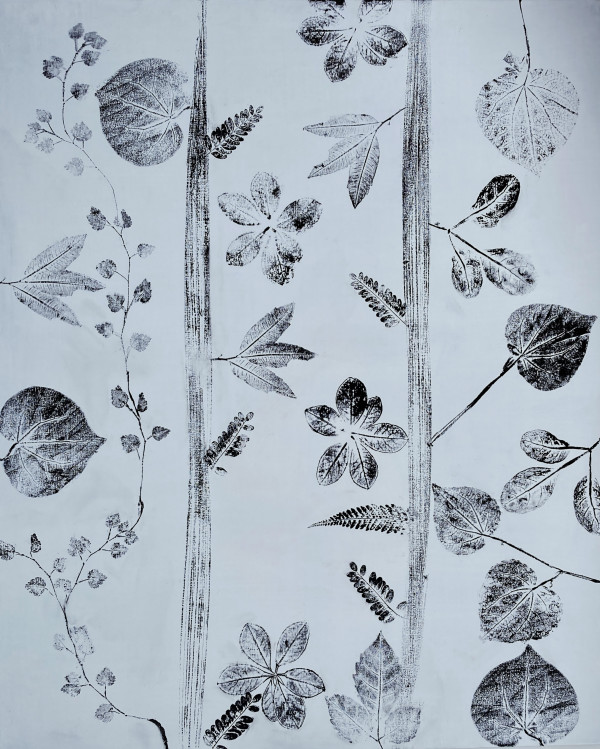
- Dr Rangihiroa Panoho
- Maunga
- acrylic, gold leaf and varnish on prepared and cut out plywood and kauri veneer
- Signature: reverse
- Inv: He_Mauri5_700
The gilded rectangular openings of this work within the more organic shape of Maunga Ōwairaka might suggest the dominance of a built environment. The mountain has been substantially altered with much of its tihi 'summit' and heart ending up as track ballast on the North-Western railway line out to Helensville. So this is my vision of its profile more akin to the way it appears in earlier nineteenth century images.
Above the mountain hangs a 'heart' form. The ngākau is a motif I began working with in 2010. It is a part of earlier works entitled 'Āku Maunga Haere' which featured waka and a heart symbols and the latter was used on the cover of my publication MAORI ART (Batemans, 2015).
I use the heart over the maunga to denote the sense of attachment and belonging humans feel towards this local volcanic feature. These are heartfelt feelings and in relation to Auckland maunga they appear to be widespread. I visited Maungawhau when its single Monterey pine was finally being purposefully removed by Council from the summit. I sensed genuine pathos amongst the many Aucklanders milling, perhaps moping, around the slopes picking up tokens of the tree to which they had so quite obviously attached such personal identity.
Trees, plants, mountains, natural forms in the Tāmaki district matter and they personify human attachment, belonging and local identity. If one understands these connections then one can glimpse also the importance of plants in Polynesian and Pacific thinking - particularly during the settlement phase.
Both works incorporate LED light which illuminating these shapes from within. In the context of the exhibition 'Maunga' asks the question what does mauri 'essence' mean when the lifeforce of the form has been so heavily altered? The recent debate regarding the return of native trees to the tihi of Ōwairaka is symptomatic of the tensions that exist between development and change and kaupapa Māori concerning mauri, mana, tino rangatiratanga and wairua that suggest other ways of viewing or understanding the maunga.
In some parts of Tāmaki maunga have been completely removed. Ōwairaka, partly due to the replanting of its slopes by resident families like the Turners, continues to have a presence in the local skyline. In 'He Mauri' a further layer is added with 'Ngakau' being placed above the work. It challenges our sense of connection between the mountain and our human values - our heart. Kei hea tā tātou ngakau? 'Where is our heart in this thinking about maunga?'
The kauri veneer for this project was supplied by Bear and Co. Veneer and Timber Solutions, in nearby Puketāpapa 'Mt Roskill'.
- Subject Matter: landscape, Māori landscape, cityscape, wooden assemblage




